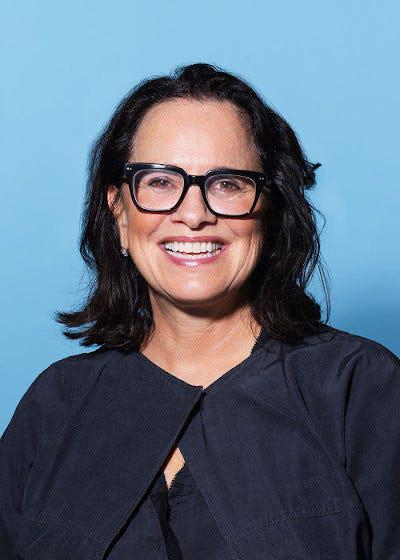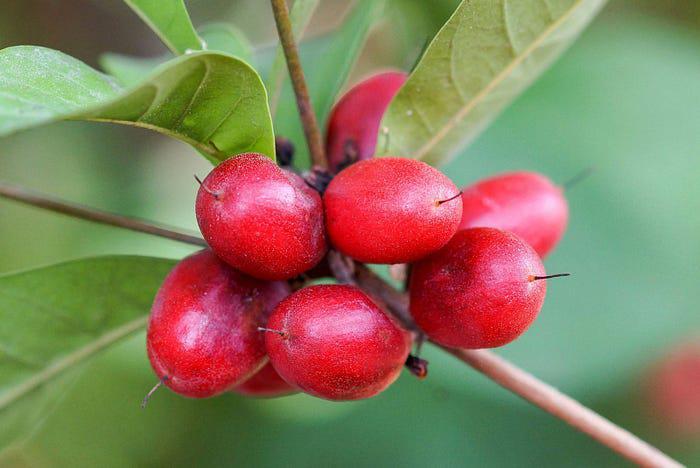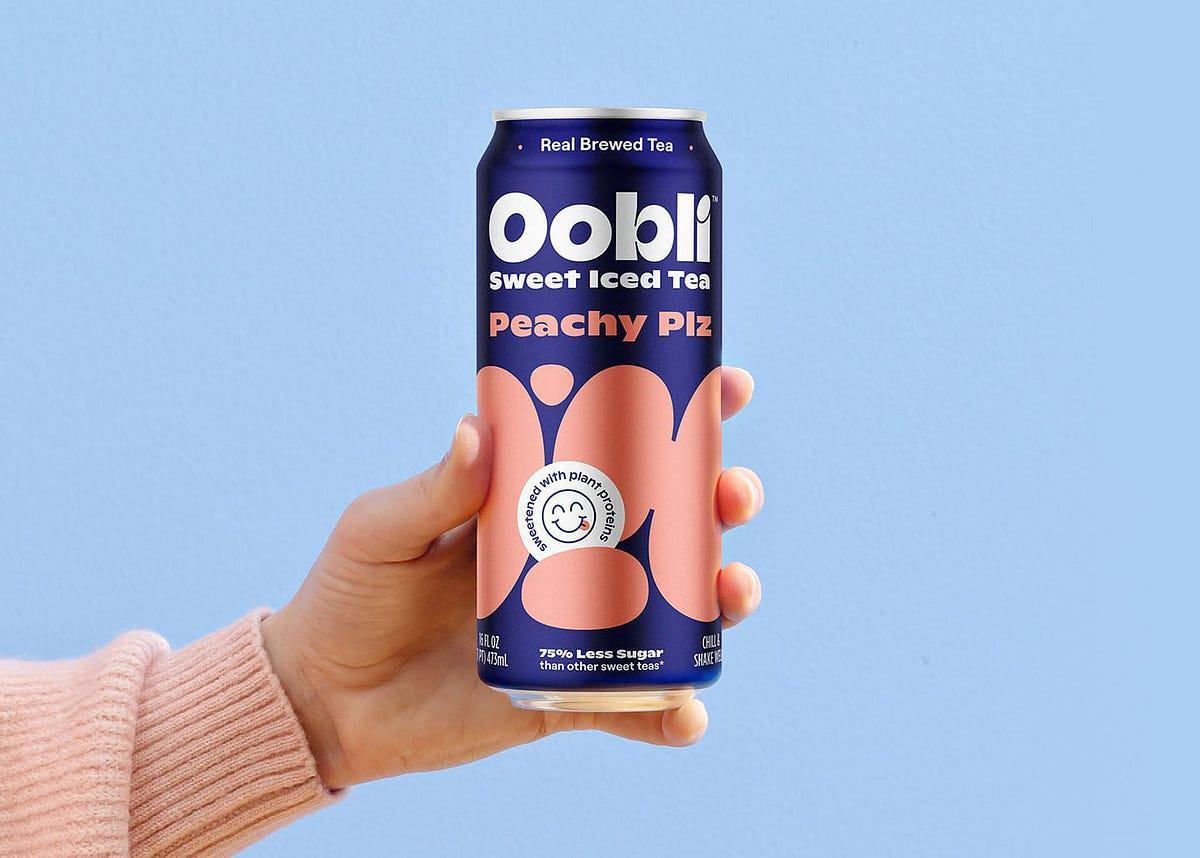Andrew Rosenblum
One of us knows that carbonated drinks are tasty but not good for health. People who drink more than one sugary drink a day tend to gain weight and have a 26% higher likelihood of developing type 2 diabetes compared to those who do not. And that is one of the reasons why food companies sold over $11 billion worth of diet soft drinks to Americans in 2020.
Skepticism about sugar-free soda is growing. In May, the World Health Organization (WHO) warned against consuming artificial sweeteners for weight loss. Worse, the agency also found that long-term consumption of non-sugar sweeteners could actually contribute to type 2 diabetes, cardiovascular disease, and early death. WHO recommended that people instead work to reduce their sugar intake.
However, it’s easier said than done when a cold, bubbly can of yum stares you in the face. I respect everyone who uses water, quinoa, and oranges.
In Davis, California, a startup called Oobli is one of several companies pitching sweet protein alternatives as substitutes for sugar and non-sugar sweeteners, sliding a sweet protein called brazzein into iced tea blends. Brazzein, found in the bright red or speckled gray fruit of the original Oubli fruit tree, is between 500 and 5,000 times sweeter than sugar. It contains no carbohydrates, so it has none of the metabolic complications of non-sugar sweeteners like insulin spikes.
However, for iced tea sold at a fairly steep price of $15 per six-pack, the company has to convince nutritionists and consumers that brazzein cannot be just another fad sweetener. The company acknowledges that consumers are economically and ecologically inclined to favor lab-grown, fermented products from gene-edited yeast. And there’s the issue of safety confirmation from the U.S. Food and Drug Administration (FDA). (The company has published peer-reviewed studies confirming the sweet protein is safe in collaboration with third-party labs, allowing it to sell the product in the U.S., but some retailers do not carry it until the FDA issues a letter agreeing with those conclusions.)
The typical American consumes about 60 pounds of added sugar a year, nearly half of which comes from beverages.
Oobli’s CEO, Ali Wing, says, “Today, 75% of American consumers are actively trying to reduce sugar. Chocolate bars. “There are 50 forms of sugar, and we’ve been working on it for the last 20 years, and it’s not going well. They see updates every six weeks on another sugar alternative that can actually be worse for you than we thought. Consumers are skeptical.”
But chocolate is just the beginning of the company’s ambitions. Oobli sees sugary beverages as a really promising niche market. The typical American consumes about 60 pounds of added sugar a year, nearly half of which comes from beverages. Jason Ryder, CTO at the University of California, Berkeley, and an adjunct professor of chemical and biomolecular engineering, says, “This is the 800-pound gorilla of sugar delivery mechanisms.
Wing says, “Beverages are the problem. And that’s why so many people switched to diet soda or sugar-free tea in the first place.
More than sweeteners meet the tongue
Decades of marketing have led to these zero-calorie drinks being believed to be the same as flavored water.
Ryder says artificial sweeteners trick the body into thinking it’s sugar. Recent studies suggest that diet soda can stimulate food cravings or confuse the body, making it unhealthy . Obese women and men ate more in response to sucralose-sweetened drinks compared to a control group that drank regular sugar-sweetened soda.

“Sugar and alternative sweeteners are all small molecules, and they all fundamentally do the same thing,” he says. “They bombard your T1R2 and T1R3 taste receptors.” These molecules essentially overstimulate our systems, which have barely been exposed to them, but are now ubiquitous.
Ryder says that taste receptors on the tongue and in the gastrointestinal tract not only detect sweetness but also perform important signaling functions. “They tell your brain, ‘Hey, sugar is coming! It’s time to make insulin now. We need to get sugar into the bloodstream so we can send it to the cells that need it.’”
Ryder says this sensitivity to the presence of sugar evolved because, for thousands of years, it was relatively scarce. In the summer, aside from fruit, our Paleolithic ancestors derived sugar only from tubers, other starches, and complex carbohydrates.
In contrast, the modern food system is filled with simple sugars and sweeteners that effectively overload taste receptors in the tongue and gut. Non-sugar sweeteners like aspartame in diet cola act as a trick, causing insulin responses even though these molecules do not consist of actual sugar that the body can collect.
Ryder says, “Things like aspartame can’t be metabolized properly, so the insulin response keeps getting triggered. “But there’s no sugar coming in.”
So our repeated insulin trips can lead to type 2 diabetes and many other issues. These include a potential link between long-term non-sugar sweetener consumption and cardiovascular disease, disruption of gut microbiota, and colonization of beneficial bacteria and other organisms in the gastrointestinal tract.
Brazzein avoids these metabolic disruptions because our bodies process proteins differently. It tastes sweet on the tongue but breaks down in our gut without triggering an insulin response.
Ryder says, “They start breaking down into peptides and amino acids. “So while sugar and sucralose and aspartame keep triggering insulin responses across all the taste receptors in the gut, proteins are already done.”
Nutritionists need more data but find it interesting
Nutrition experts in conversations with Proto.Life provided qualified support for Oobli’s Brazzein as a way for Americans to reduce calories from sugary drinks, but expressed a desire to see more research before fully endorsing each product.
“Are there health benefits to Brazzein-sweetened drinks? Yes. They have fewer calories than regular sugar and a lower glycemic load,” says William Li, author of Eat to Beat Disease. He also noted that preliminary studies suggest the protein has antioxidant and anti-inflammatory properties, but research to determine what dosage is needed in humans has not been conducted. “So it’s premature to speculate about benefits or potential long-term side effects,” he says.
Christina Fasulo, a senior clinical dietitian at UCLA, found Brazzein promising as an alternative to excessive sugar in the American diet. She also noted the intriguing lab and animal results showing antioxidant and anti-inflammatory effects of Brazzein, but said she would like to see human studies before recommending the substance to patients.
Fasulo also points out that the evidence for diet soda is inconsistent without going entirely down that path. A recent meta-analysis of 20 randomized controlled trials found that non-sugar sweeteners actually help induce weight loss and fat reduction.
Danica Cowan, a dietitian at the University of California, San Francisco, agrees that sugary sweet drinks are a particular concern. This is because our bodies process liquid calories faster and can drink sugary beverages much more quickly. “Most people wouldn’t eat five cakes in a day,” she says. “But people can have five cans in a day.”
Cowan encourages patients to work on reducing the overall sweetness of their diets rather than seeking sugar substitutes. This way, they become accustomed to lower levels of sweetness in food. If they can’t completely cut out added sugars, she recommends naturally occurring sweeteners like stevia or monk fruit, but also has the long-term goal of completely cutting those substitutes out. She advises patients to get used to the natural sweetness of foods rather than using the distorted fructose content of the current food system as a baseline. And part of William Li’s advice in Eat to Beat Disease is to give willpower a chance. It’s about drinking water, tea, and sometimes fruit juice instead of sugary drinks.
The future of sweeteners?
But for those who can’t quit sugary drinks in the afternoon, Oobli is one of several companies worldwide.
Oobli CEO Ali Wing says, “The last thing we want is for people to feel bad about ‘having a sweet tooth.’”
In addition to Oobli, there are other competitors in the mix. Sweegen, based in Irvine, California, recently received “GRAS” (Generally Recognized As Safe) certification to sell Brazzein as an industrial additive. Sweegen is promoting its protein sweetener portfolio called “Sweetensify” alongside Brazzein’s “sweet synergy” and another sweet protein called Thaumatin while performing overdrive work.
"Every time we try to find the perfect low-calorie, non-effective sweetener, we fall short."
An Israeli company based in Rehovot called Amai Proteins has created a “designer” version of a naturally occurring sweet protein called Monellin and began testing it with Ocean Spray cranberry juice in 2020. A startup in Santa Monica recently called Nature's Wild Berry received $80,000 investment from Mark Cuban and Lori Grenier on the startup pitch meeting game show Shark Tank. The winning product was a freeze-dried “Miracle Berry” grown in Florida. The key ingredient is a sweet protein called miraculin that coats the tongue and makes tart foods taste unusually sweet. One judge on the show called it “palate trickery,” as lemon, plain cranberry juice, and even apple cider vinegar tasted sweet despite having no sweet calories.
The excessive sweetness of this seemingly guilt-free protein worries dietitian Danica Cowan. She says that the sweet taste of non-sugar sweeteners that do not actually deliver sugar can lead to more cravings. “Every time we try to find the perfect low-calorie, non-effective sweetener, we fall short.”
However, Ryder says that because the body metabolizes brazzein as a protein, tasting sweetness won’t trigger cravings. “As far as I know, there’s no definitive evidence that simply tasting sweet things leads to cravings like simple sugars do. The known side effects come from the metabolism of too many things themselves.”
This certainly sounds plausible. But as nutrition experts have said, we can’t be sure how regularly consuming a can of a Brazzein-sweetened drink will affect our complex metabolic systems over time without further research.

Ecological justification
Ryder and Wing also make an environmental pitch for sweet proteins over sugar or non-sugar sweeteners. Brazzein occurs only in small amounts in the Pentadiplandra Brazzeana Oubli Berries, which grow on trees at the forest edges of the tropical sub-Saharan African belt stretching from the Congo River basin and northern Angola to eastern Nigeria. The abundance of these trees makes agriculture incredibly expensive. And even if Oubli fruit trees can be cultivated in orchards, large-scale agriculture would cause the same deforestation issues as palm oil production in Indonesia or Madagascar. Ryder notes that farmers have planted 65 million acres of sugar worldwide, much of it in sensitive tropical areas.
“For every 1% reduction in sugar, we could replace 650,000 acres of sugar cane land, which could either lose more nutrition or replace growing tropical rainforests.”
Thus, Oobli has turned to biotechnology and genetically modified yeast to produce brazzein, which naturally grows on trees. According to Ryder, the company has developed a scalable fermentation process. “We’ve developed a fermentation process that has proven commercial-scale sweet protein manufacturing in three countries.” This allows the company to provide an economical source of sweet protein, allowing forests to grow instead of crops.
And to this reporter’s palate, Oobli’s tea is subtly sweet without the strange “off” taste that stevia and synthetic sweeteners can have. I bought a six-pack, and my dessert-oriented sons drank the rest. While Snapple or Arizona Iced Tea Wallop has a sweetness that hits the palate, Oobli is smoothly balanced with a variety of lemon or peach tea flavors.
That said, brazzein behaves differently in the mouth than sugar. There’s a slight delay when it hits the tongue and is recognized as sweet. So Oobli uses a small amount of sugar derived from agave in the tea to avoid confusing the tongue. However, the amount of added sugar is minimal. Oobli iced tea cans contain 7 grams of sugar, while a sweet Snapple bottle has about 46 grams.
Making proteins in a lab that are hard to find in nature can feel like the opposite of everything behind the organic food movement’s push for “natural.” Why can’t people show restraint and cut back on diet cola? Why can’t they just accept fig cookies or flavored pies instead, or have a caloric beverage atmosphere with coffee, tea, and water?
But in a country where 40% of adults are obese, appeals to personal responsibility and dietary morality feel flashy and inappropriate. Many of us Americans lack the restraint to cut back. Or we simply don’t care. We suck down soda as if there’s no tomorrow. And let’s face it, that’s millions of us. Synthetic biology may offer an escape route. Making hyper-sweet proteins in a lab may be the best way to start addressing the calorie-drinking problem.
Originally https://proto.life published.
